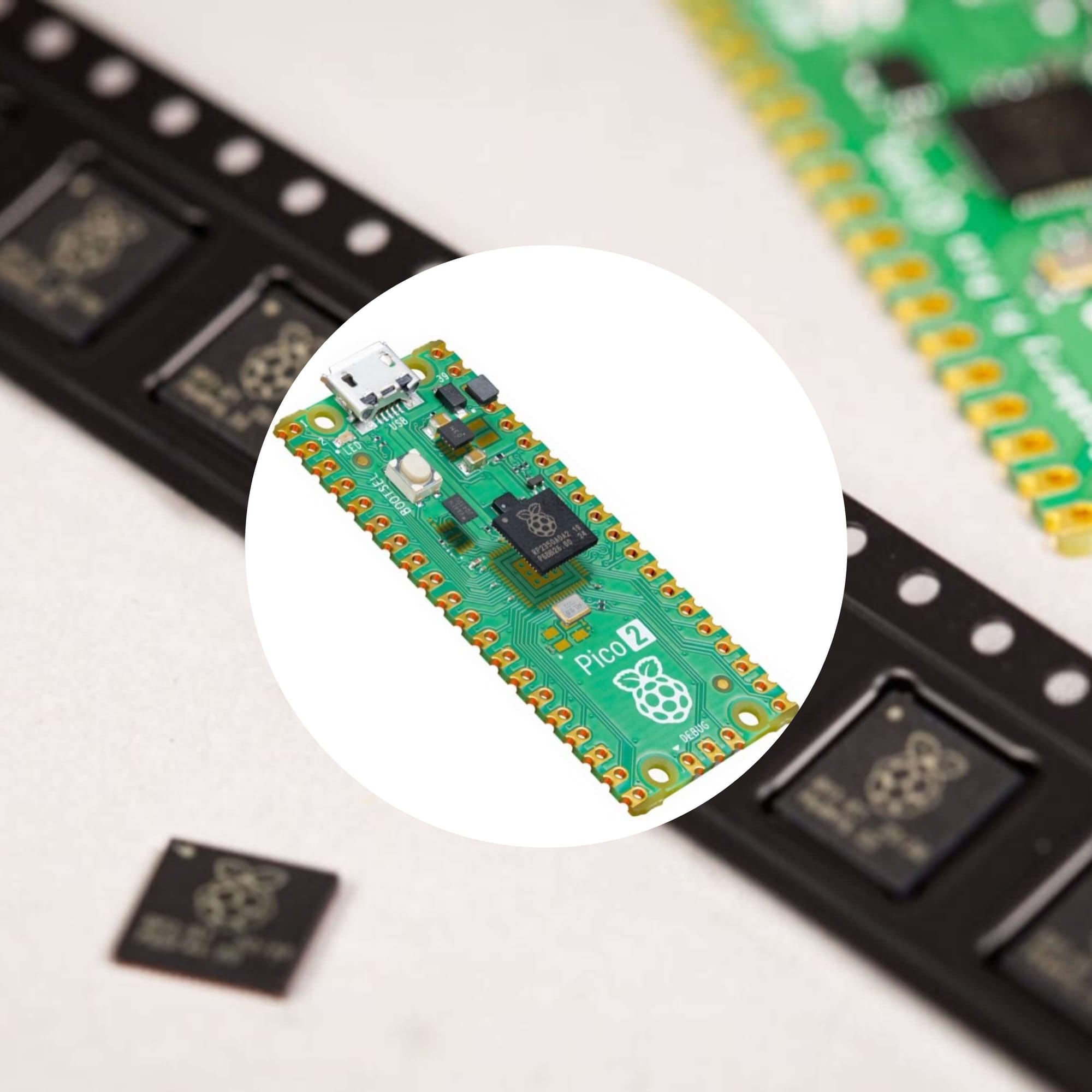
Generally speaking, Single-board computers (SBC) like the Raspberry Pi 5 usually steal the limelight when it comes to compact computing. However, those who want something more simple, and less-powered, typically opt for a single-board microcontroller like the Arduino Nano.
If you were wondering about the difference between an SBC and a single-board microcontroller, well, one can run an operating system and is powerful. Whereas, the other is meant for less complex tasks like running just a single program.
In both those areas, Raspberry Pi is a well-established name, known for their vast range of products that cater to a wide range of use cases.
In a recent announcement, they have introduced a new microcontroller board, the Raspberry Pi Pico 2, which incorporates a new chip, and is a successor to the Pico, which was introduced back in 2021.
Raspberry Pi Pico 2: What to Expect?

At the heart of the Pico 2 is a RP2350 microcontroller, which has been derived off the earlier RP2040 chip used on the first Pico.
The board that was used to house the chip features 4 MB of external QSPI flash RAM, which is both form-factor and electrically compatible with the OG Pico, and features a familiar button to activate USB mass storage mode.
Some key specs of the microcontroller include:
- 2x Arm Cortex-M33 cores running @150 MHz.
- Support for floating point and DSP.
- 12 upgraded PIO state machines.
- Robust security architecture.
- 520 KB of on-chip SRAM.
During the launch, Raspberry Pi stated that:
The development of Pico 2 and RP2350 has been an epic, multi-year effort: it is comfortably the second-largest engineering programme we’ve undertaken, behind only Raspberry Pi 5.
Its success is a testament to the incredible talents of the team here, and to the world-class partners who have joined us on the journey.
Moving on, there's another interesting thing in the spec sheet that will catch many people's attention, the RP2350 comes with two RISC-V cores that can be used instead of the Cortex-M33 cores during boot time.
The cores are open-source Hazard3 ones, which were developed by a Raspberry Pi Engineer, Luke Wren, in his spare time, and made available under the Apache-2.0 license.
When someone on Reddit asked why there was a need for two different types of cores, another Redditor, hellotanjent replied that:
The RISC-V cores are relatively small compared to everything else on the chip and they require no licensing fee unlike the ARM cores.
There is some speculation that the inclusion of the RISC-V cores is to help encourage the migration of the existing Pico codebases over to RISC-V so that the Pico 3 (whenever it comes out) can be RISC-V only and remove the ARM licensing fees entirely.
If what they said comes to be, then the cost of future Pico's could go down considerably, as Raspberry Pi won't have to pay ARM licensing fees, in turn potentially transferring the savings onto their customers.
On the security side of things, the RP2350 features a signed boot security model, where booting the binary is only allowed if it has been signed using a private key, with a corresponding public key stored in OTP. This prevents an attacker from running arbitrary code.
But, wait, there's more: the chip also employs additional techniques like a redundancy coprocessor and hardware fast glitch detectors to further deter wrongdoers.
Raspberry Pi expects there to be issues with their security measures, and are ready to fix them as they pop up.
To improve bug detection, they are commissioning two third-party firms to audit their security architecture, and are offering a $10,000 bounty for the first confirmed break of their signed boot process.
💰 Pricing and Availability
With manufacturing being handled by Sony, the Pico 2 is available for $5. You can source it through the many authorized reseller partners, who can be found on the official website.
Additionally, many partner products based on the RP2350 chip have also been announced, with options from the likes of Adafruit, Cytron, Hellbender, Seeed, and Wiznet to name a few.
There are also plans to introduce a wireless-capable Pico 2 W by the end of the year, which would be using the same Infineon 43439 modem found on the Pico W.
💬 Are you going to grab one for a DIY project? Have something more large scale in mind?
- Even the biggest players in the Linux world don't care about desktop Linux users. We do.
- We don't put informational content behind paywall. Your support keeps it open for everyone. Think of it like 'pay it forward'.
- Don't like ads? With the Plus membership, you get an ad-free reading experience.
- When millions of AI-generated content is being published daily, you read and learn from real human Linux users.
- It costs just $2 a month, less than the cost of your favorite burger.
Become a Plus Member today and join over 300 people in supporting our work.










